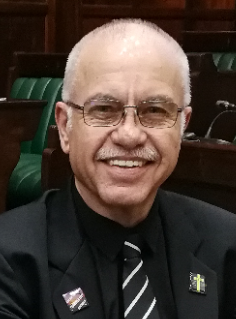Ferrier International sharing the financial news thanks to FNB Chief Economist Cees Bruggemans for this article.
******************************
The new growth expansion beyond 2009
 |
| By Cees Bruggemans, Chief Economist FNB |
| 24 November 2008 |
 |
|
The great global financial crisis of 2007-2009, its subsequent severe recession and the failed deflation of 2009 lie behind us. Ahead stretches a new global economic expansion. But of what duration and quality? Short and violent, marked by much real and financial volatility, and ultimately cut short in young adulthood (less than five years)? Or could there be another long growth goldilocks in the making, stretching for a full decade of ten years or more, now that the world economy has cleaned out its tail feathers like Well, it ultimately depends on what you believe or want to believe about what has just happened, and the extent to which the tail feathers really have been cleaned out. Focusing on the trauma first, the OECD world will be going ex-credit for a while. This means no excessive leveraging for banks, or commodities. But also not for households, and their housing and credit cards. This doesn’t necessarily mean the end of credit, securitization or even leverage. But for now it means no excess. That partly reflects experienced pain but also intensified regulatory oversight, self-imposed tightened credit criteria and precautionary real interest rates. So the rich West will be back, but humbled, and less credit intensive. Households for a while will save more even as governments try to get their emergency money back (probably at a profit), normalizing their national debt ratios and budget deficits. Central banks will try to normalize liquidity provisioning and real interest rates. In an unchanged world, this would mean a reduced growth potential, as the previous specialization of the 2000s implied that the East produced, saved and recycled while the West dissaved, consumed and indulged in leveraged speculation. If the Western part of this equation temporarily breaks down, as old fashioned discipline and frugality dictates balance sheet repair and saving at the expense of consumption, speculation and growth, what else could possibly change in the world? Well, even without the benefit of a Bretton Woods 11, for such forums never really arrange anything except in a state of war when serious decisions are possible, the Eastern sense of self-preservation may well dictate an independently engineered change of course. Indeed we observe it in the middle of the current crisis. The East is willing to cut interest rates and boost fiscal spending in support of domestic growth. Even as its export potential temporarily dwindles, the policy emphasis on domestic expansion limits the cyclical easing in their growth. It will also be central to an early Eastern growth revival into 2010. Export growth could well be secondary, for the first time in six decades. In this coming new long expansion, the East could lead and reinforce Western growth recovery by offering export markets. The Western recovery in turn eventually may again boost Eastern export demand. And so on. In a world seriously gone below potential in 2008-2009, with lots of resource slack and low capacity utilization, there will be many years of good growth ahead before new overheating and excesses announce the cyclical end. Except that there is one rotten apple in the global system that hasn’t be fully addressed. Commodities. Reduced demand during 2008-2009 has created excess commodity supplies, and has greatly lowered prices. Except it may only be terribly temporary in nature. Key commodities will have lowered supply through output cutbacks, especially oil. Investment in new capacities will have been drastically cut back, also in alternative substitutes. Thus the long-term bottlenecks existing in some of these commodities will not have been addressed much, if at all, ready to explode anew at the first whiff of renewed demand growth. Oil especially is a worrisome case. World demand may have radically fallen off, but supply has also been seriously compromised during 2008-2009. Come global demand recovery from 2010, it won’t take all that much for the 2003-2008 experience to repeat itself, possibly more virulent than before, as peak oil may (or may not) be in play. Certainly limited new investment will be a factor curtailing new supplies, even as old suppliers disappoint and alternatives and substitutes take longer to materialize, because the interim incentives disappointed when oil went back to $30-$50 for a good while. When the global screws tighten anew, the next inflation rollercoaster may be upon us before we fully realize it. And it may, again, become reinforced by a currency Dollar rollercoaster. At the moment the Dollar is getting favoured by the global risk aversion favouring US safe havens, global investments being liquidated and streaming back to the US and Japan, firming the Dollar and Yen. In addition, global corporate entities which were serious Dollar borrowers in good times, are desperately trying to cover their exposed Dollar liabilities, further adding to the artificial high demand for Dollars while putting selling pressure on just about everything else. But this firestorm will also end, probably sometime in 2009. By then, capital remittances back to the Even if the Fed starts to reduce excessive central bank liquidity provisioning from late next year, and starts upping US interest rates into 2010, there will presumably still be a global liquidity overhang for some time. The Dollar could therefore plunge anew into 2010, boosting the attractiveness of EM high-yielders and commodities all over again, even if only temporarily. So post-2009, we can look forward to new inflation resurgence, starting slowly because of lingering global resource slack, but fed by commodity constraints favouring rapid commodity price resurgence, and possibly topped off by weak Dollar boosts. It isn’t as if the world hasn’t learned. It is simply that the commodity bottleneck, especially oil and gas, will prove even more problematic in the 2010s decade as it showed itself to be in the 2000s. And so the costs of this problem may show earlier, too. With central banks extra sensitive about too much liquidity surviving from the crisis, early inflation resurgence and the moral hazards involved not fully addressed last time, they may just decide to react early. As Rudi Dornbush claimed years ago, business expansions don’t die of old age but get murdered by central banks. And so it may happen that over-vigilant central banks, still feeling guilty about their easy ways in 2008-2009, decide to overcompensate, killing off any resurgent world inflation before it has well and truly had a chance of showing itself. Is the next global expansion likely to be a long one? Despite a cleaned out household, housing and banking condition, with substantial resource slack allowing a long recovery period before inflationary pressures show, it may well be the special nature of the global energy bottleneck that cuts things short. As the global commodity pipeline starts to show its inflationary potential, our precious metals may benefit, though any new global car demand falloff through 2015 would be also to our detriment. If the SARB responds with vigilant early interest rate tightening to higher inflation on top of an unchangingly high current account deficit and future It would be an economic expansion in which our durable consumer demand could shorten its replacement cycle temporarily, fully releasing vigorous pent-up demand, before encountering anew the tightening SARB leash. House prices could stabilize, and with rising confidence levels and falling interest rates encourage a modest resurgence in residential investment, even if working-class and middle class backlogs of the order of a million housing units will remain important building incentives. And fixed investment should experience renewed, if modest, resurgence as global demand recovers and our industrial capacity utilization improves. Only our export capacity may remain doubtful, reflective of the same constraints that have been so noticeable in recent decades in limiting long-term expansion. But at least the next business expansion beyond 2009 may cover one full political cycle, limiting populist instincts at the next election round in 2014. One should always be thankful for small mercies. After a new global mid-cycle moderation, around 2014-2016 (coinciding with the successor election to a graying Barack Obama or his successor), it will be back to the next short economic global expansion. Short again? Probably yes, for peak oil, climate change, and baby-boomer demographic interchange will be looming worldwide, and nothing as expensive has ever been invented, except pointless 20th century moon shots and world wars. These combined challenges can only be inflationary in their collective global impact. And you will know what that means to central bankers forever on the lookout for containing inflation. Cees Bruggemans is Chief Economist of First National Bank. Register for his free e-mail articles on www.fnb.co.za/economics |
 |
-?*******$$$$$*******$$$$$$$*******$$$$$*******
Ferrier International keeping you informed.






